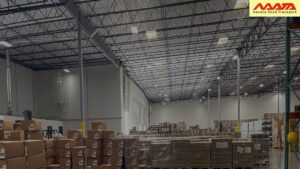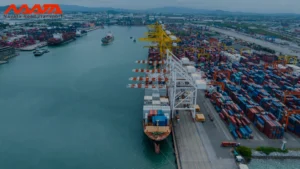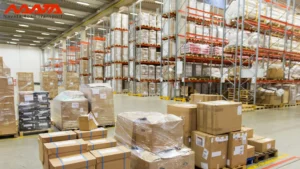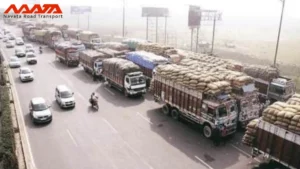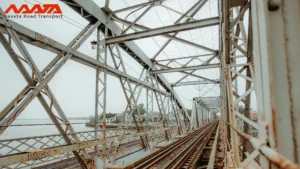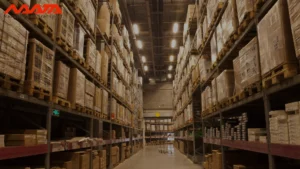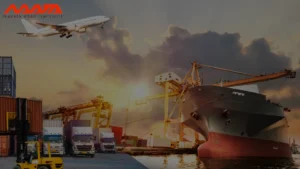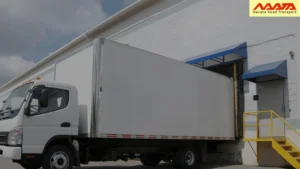
The Rise of Automation In Inbound Logistics
Table of Contents
Rise of Automation In Inbound Logistics
Inbound logistics oversees the flow of items into a business, from raw materials to final products. However, completing this task well is difficult. It takes a great deal of planning, coordination, and hard effort.
That’s where automation comes in. Automation refers to the use of machinery and technology to do tasks previously performed by humans. It’s also becoming increasingly frequent in incoming logistics. Robots can now carry products around warehouses faster than humans can. clever algorithms can forecast when supplies would run low, allowing orders to be issued precisely on time.
Automation, however, is about more than just speed. It’s also about precision and safety. Machines can complete repeating jobs without becoming fatigued or making mistakes. They can also work in potentially risky environments, like as deep within a warehouse filled with large boxes.
The rise of automation in inbound logistics is a revolution that is changing the way commodities are transported and handled around the world. Lets understand how automation is developing inbound logistics.

Trends Driving Automation in Inbound Logistics
Shorter Delivery Times
As customers want faster product delivery, the logistics process is under pressure to improve efficiency. Automation helps to optimize route planning, warehouse management, and order fulfillment. Automated solutions can speed up the sorting, packing, and loading operations, ensuring that products flow rapidly through the inbound logistics chain.
Complex Supply Chains
Supply chains have evolved throughout time, connecting multiple suppliers, distribution locations, and transportation routes. It introduces complexity by providing real-time visibility and control over inventory movements. Advanced analytics and AI algorithms embedded in predictive planning and decision-making allow logistics managers to anticipate interruptions and optimize resource allocation.
E-commerce & Omnichannel Retail
The rise of internet shopping and the development of omnichannel retail tactics have reshaped the logistics landscape. Automation enables organizations to efficiently manage a wide range of order types, from individual consumer shipments to bulk deliveries to retail locations. Automated order processing, inventory management, and fulfillment systems enable businesses to meet the demands of omnichannel commerce while maintaining excellent service levels and reducing costs.
Cost-Cutting & Efficiency Improvements
In today’s competitive market, cost containment and operational efficiency are critical for firms to stay profitable. Automation technologies like as robotics, artificial intelligence, and Internet of Things devices provide for more efficient and agile inbound logistics procedures. Companies can cut labor expenses, eliminate errors, and increase overall productivity by automating repetitive processes and maximizing resource use. Automation also enables continual process improvement by offering data-driven insights into performance metrics and bottlenecks.
You May Also Like Reading: Trucking management and automation
Impact of Automation in Inbound Logistics
Automation In Warehousing
Automation in warehousing allows everything to run smoothly and efficiently. When a carrier delivers an item, the system automatically tracks who received it and when it arrived. This helps you keep track of all deliveries and guarantees that nothing is lost. The system also checks to see if there is enough space in the warehouse for additional goods, preventing items from piling up in an unorganized manner.
Every item has a designated location, and the system tracks where each item is put, making it simple to find anything quickly. When stock levels go too low, the system sends an alarm and can even make an order with the supplier automatically. This ensures that the warehouse will never run out of important supplies, ensuring a consistent and reliable supply chain. Automation manages these quickly and accurately, making warehousing more efficient and organized.
Automation In Route Optimization
Inbound Logistics automation comprises smart solutions for route optimization and vehicle selection, resulting in increased efficiency and cost savings. The technology uses advanced route optimization to identify the best way for delivery, even when numerous pickup sites are involved. This implies that delivery is faster and requires less gasoline.
Automation is also useful in determining the most cost-effective truck size based on the size and weight of the products. This guarantees that the truck is not too large (losing space and money) or too little (creating delays and unnecessary journeys).
Automation In Load Information
Automation of load information entails employing technology to simplify the process of receiving and documenting shipments. When a load arrives, automated systems can record important details such as the time and date of arrival. Cameras can also snap photographs of the products to ensure that they are delivered correctly and in good shape.
This data is then stored in a centralized system, making it simple to validate and track. Automated sorting systems can then organize the cargo according to a variety of factors, such as product category and priority. This lowers human labor, decreases errors, and expedites the handling process, guaranteeing that the warehouse runs smoothly and precisely.
Autonomous Vehicles
In future inbound logistics will rely heavily on transportation automation to streamline the transit of goods from suppliers to warehouses or distribution hubs. Autonomous vehicles (AVs) and drones will provide novel ways to move things effectively and safely. Autonomous vehicles, such as self-driving trucks, can travel routes automatically, lowering transportation costs and improving delivery times.
Drones especially beneficial for delivering tiny goods to remote or difficult-to-access locations, increasing the speed and accessibility of inbound shipments
Inventory Management Automation
It makes it easier to track products. RFID technology tags goods with minuscule chips, which can then be read from a distance. This allows organizations to immediately identify where items are housed and avoid losing them. Inventory tracking software uses RFID and other technologies to show where products are at all times. It speeds up processes such as receiving and shipping while also reducing errors.
Furthermore, demand forecasting algorithms estimate how much of a product will be required based on previous sales and other data. This allows firms to store just the appropriate amount of goods, preventing them from running out or having too much. All of this automation simplifies and improves inventory management, saving organizations both time and money.

Benefits of Automation In Inbound Logistics
1. Increased Efficiency
Automation accelerates procedures such as receiving, sorting, and storing items. Tasks that used to take hours can now be accomplished in minutes, allowing personnel to focus on more strategic duties.
2. Labor Cost Reduction
By automating repetitive and labor-intensive processes, firms can reduce the demand for manual laborers. This saves significantly on salary and training expenditures.
3. Improved Accuracy
Automated systems are less prone to error than human labor. This guarantees that inventory counts, order picking, and shipment tracking are correct, lowering the possibility of errors that could result in lost sales or customer unhappiness.
4. Improved Safety Measures
Automation eliminates the need for human workers to do harmful tasks like heavy lifting or working in hazardous areas. This reduces workplace injuries and offers a safer working environment.
5. Ability to Handle Peak Demand
During peak times, automated systems can scale up operations without the need for extra temporary staff. This flexibility guarantees that organizations can satisfy client demand without delays or sacrificing service quality.
Conclusion
To summarize, the rise of automation in inbound logistics is revolutionizing how firms manage their supply chains. Companies can use modern technology such as robotics, RFID, and smart software to streamline their operations and reduce errors and expenses. Automation not only speeds up procedures, but it also improves accuracy and safety, increasing warehouse efficiency. It ensures timely delivery by optimizing routes and vehicle selection, and real-time tracking keeps everything on track. Furthermore, automated solutions make inventory management more efficient, reducing stockouts and overstocking.
As demand increases, these systems can scale rapidly without requiring more labor, resulting in seamless and dependable service. Embracing automation in inbound logistics leads to higher productivity, cheaper costs, and better overall performance, making it a critical step for firms trying to stay competitive.
Thanks For Reading: The Rise of Automation in Inbound Logistics
Powered By 360Presence
